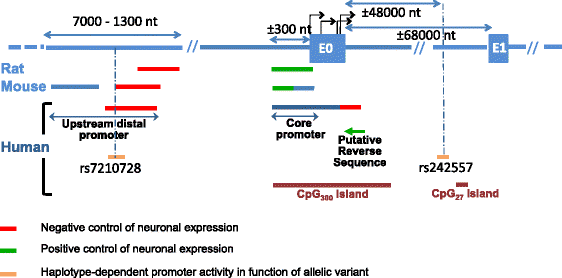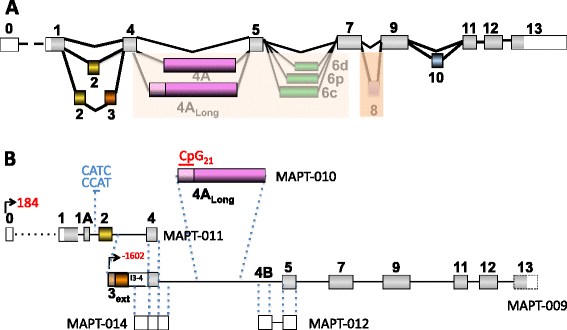Regulation of human MAPT gene expression
- PMID: 26170022
- PMCID: PMC4499907
- DOI: 10.1186/s13024-015-0025-8
Regulation of human MAPT gene expression
Abstract
The number of known pathologies involving deregulated Tau expression/metabolism is increasing. Indeed, in addition to tauopathies, which comprise approximately 30 diseases characterized by neuronal aggregation of hyperphosphorylated Tau in brain neurons, this protein has also been associated with various other pathologies such as cancer, inclusion body myositis, and microdeletion/microduplication syndromes, suggesting its possible function in peripheral tissues. In addition to Tau aggregation, Tau deregulation can occur at the expression and/or splicing levels, as has been clearly demonstrated in some of these pathologies. Here, we aim to review current knowledge regarding the regulation of human MAPT gene expression at the DNA and RNA levels to provide a better understanding of its possible deregulation. Several aspects, including repeated motifs, CpG island/methylation, and haplotypes at the DNA level, as well as the key regions involved in mRNA expression and stability and the splicing patterns of different mRNA isoforms at the RNA level, will be discussed.
Figures




References
-
- Sergeant N, Delacourte A, Buee L. Tau protein as a differential biomarker of tauopathies. Biochim Biophys Acta. 1739;2005:179–197. - PubMed
Publication types
MeSH terms
Substances
LinkOut - more resources
Full Text Sources
Other Literature Sources

